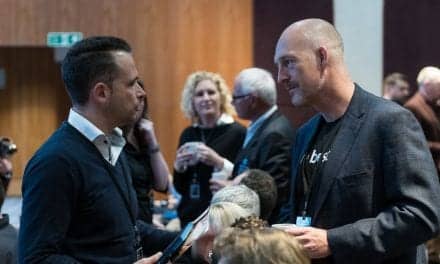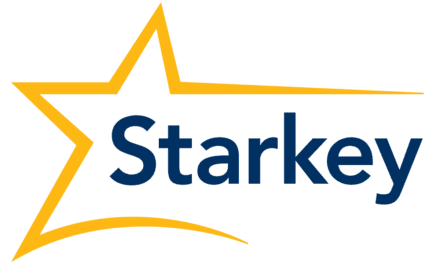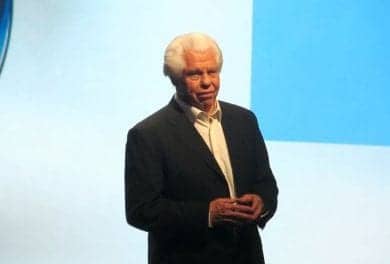Blog | Hearing Aid Dispensing

I would agree with him; the B&S dispensing system is fascinating, and as teleaudiology progresses, this marketing approach to consumers—particularly young ones— may become much more common and valuable. B&S operates on a “blended service model” in which consumers can purchase the company’s hearing aids online, but are also supported by retail outlets they can visit for refitting, reprogramming, adjustments, etc. As such, it is more of an online retailer with the option of in-person audiological services for anyone who needs them. The company, founded in 2008, launched its Facett hearing aid in April of last year which is designed to be affordable, self-fitting, modular, and easy-to-use. B&S uses its proprietary IHearYou® OS- and Android-compatible online fitting software so anyone living anywhere with Facett can receive programming support. Users can also connect remotely with an expert via online video, so audiology appointments can be avoided in the name of convenience. But, most importantly, people can also access Facett from a clinic, and receive advice and testing from a professional. So their “blended model” offers three service options:
- Over-the-counter (OTC)/do-it-yourself (DIY);
- OTC/DIY with expert assistance via teleaudiology; and
- Traditional appointment(s) with a clinician.
Any (or all) can be used at the discretion of the user.
The original founders of B&S are very knowledgeable about hearing aids and hearing healthcare. Elaine Saunders is an accomplished audiologist and author who has contributed to The Hearing Review, as have other associates of Peter Blamey, who is the inventor of the ADRO system which has been employed in cochlear implants and hearing aids (eg, Liberty Hearing Aids at Sams Clubs use ADRO). Both have been recognized for their contributions in our industry with many awards, including from AAA.
According to long-time industry analyst Niels Leth of Carnegie Research in Copenhagen, the acquisition by Sonova was first announced in October 2018, and includes the three BlameySaunders brick-and-mortar offices in Australia (Melbourne, Sydney, and Brisbane), to which people can go for in-person hearing aid fittings. Obviously, this is a very limited reach for a large continent, and B&S is not a large company. Sonova does own several traditional hearing clinics in Australia, but it’s not known if any of these can/will provide services to B&S customers. Facett hearing aid prices are said to be roughly on par with other “basic/economy” hearing aids in Australia.
Putting things in context, the purchase makes sense for Sonova relative to understanding the future market, and the company has always been good at assessing different business models and marketing concepts (eg, the now-mothballed Seven Hearing Aids, Steinway (Verve), etc)—and, win or lose, learning from them. Presumably, Sonova is looking at BlameySaunders to gain insights and analyze the omni-channel distribution model, which any realist would acknowledge might become important in our field’s future (like it or not), especially as teleaudiology gains ground and functionality. It’s interesting to note that other companies are also highly interested in this model. At last year’s ADA convention in Orlando, audiologist and long-time industry expert Christopher Schweitzer, PhD, reviewed the “blended service model” and used as an example Clementine, which is trying to become a common programming platform for online amplification devices via mobile apps, kiosks, and the internet. One might think of Clementine as aspiring to be the “NOAH interface” for online hearing aid retailers (see Samplified Audio).
From an clinicians’ perspective, Dr Schweitzer jokingly likened the audiologists’ role in the blended service model to a “barber fixing a $5 haircut.” But he was not joking about its potential for expanding hearing aid accessibility and affordability…
From an clinicians’ perspective, Dr Schweitzer jokingly likened the audiologists’ role in the blended service model to a “barber fixing a $5 haircut.” But he was not joking about its potential for expanding hearing aid accessibility and affordability, or for it to become an avenue for consumers—including younger people with milder losses, jobs, and kids—to gain easier access to quality amplification and professional/personalized care. Additionally, it’s worthwhile to point out that the blended model builds on, but does not obviate, today’s traditional in-person professional care model that has been the gold standard in hearing care for decades.
Karl Strom is editor-in-chief of The Hearing Review and has been reporting on hearing healthcare issues for over 25 years.






This will be an interesting development in the hearing aid space. It used to be the appointment with an Audiologist was standard operating procedure. Looks like that might be re-written in the future. I’m always skeptical of self-diagnosis, but it seems like telemedicine/ teleaudiology is going to be the way of the future.
I completely agree with you on your assessment, I think Phonak will gain real understanding of this type of channel, they have not just bought a business, they have bought knowledge that may well help them shape their own channels moving forward.
Thanks Geoffrey. And thanks for your original post!